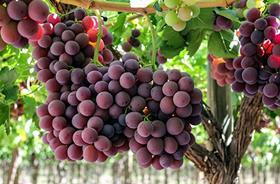
Chilean table grape exports to Asia are set to rise significantly this season, led by seedless varieties such as Flame, Sugraone and Thomson Seedless, while shipments to Europe will fall slightly, according to the country’s Table Grape Committee.
Chairman Fernando Sat said 2015/16 was shaping up to be a normal season.
“We will achieve a normal volume of exports this season, provided there are no adverse weather events, that is to say between 90m and 100m cartons,” he said.
According to figures from Asoex, Chile has so far shipped 956,015 cartons to different markets, mainly of the Flame Seedless, Sugraone, Thomson Seedless, Prime and Perlette varieties.
Asia will account for a larger share of shipments this season, reflecting the trend seen over recent years.
“We are greatly increasing our volumes to Asia, mainly to China, South Korea and Southeast Asia, especially in seedless varieties,” Sat said.
Exports to Europe will fall slightly, “basically because of the exchange rate and some of the requirements imposed by certain European markets where food safety aspects are confused with technical aspects,” Sat continued.
In terms of varieties, he said an increase in new varieties –mainly seedless ones – would enable shippers to offer a more diverse supply and quality.
“The US is a market where we are leveraging these new varieties and they have had a very good reception there,” Sat explained.
Meanwhile, returns for Chilean table grape growers in 2015 were similar to the levels achieved in 2013, the last “normal” season before the devastating freezes of September 2013, according to an analysis producer association Fedefruta.
The figures show that average returns reached US$0.98 per kg compared with US$1.014 per kg in 2013. However, last season’s shipment volume was significantly lower, reaching 753,000 tonnes compared with 850,000 tonnes in 2013.
“Returns in 2015 remained at similar levels to 2013 in spite of the export crop being almost 100,000 tonnes smaller,” said Alfredo García.
He explained that the smaller berry sizes resulting from the ongoing water shortage –particularly in Coquimbo and Valparaíso – had affected the profitability of Asian exports.
García said the effects of the lower prices had been mitigated by the strengthening dollar.
Given the continued rise of the dollar and the rains that had fallen in northern regions earlier this year, the outlook for the current season was positive, he said.



